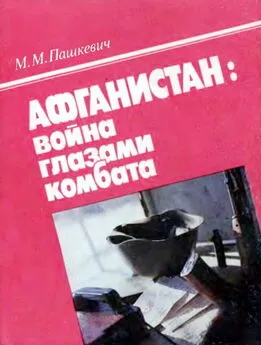Михаил Супотницкий - Биологическая война (Часть 3)
- Название:Биологическая война (Часть 3)
- Автор:
- Жанр:
- Издательство:Кафедра, Русская панорама
- Год:2013
- Город:Москва
- ISBN:978-5-93165-328-0
- Рейтинг:
- Избранное:Добавить в избранное
-
Отзывы:
-
Ваша оценка:
Михаил Супотницкий - Биологическая война (Часть 3) краткое содержание
Часть 3. Частная неправильная эпидемиология.
Биологическая война (Часть 3) - читать онлайн бесплатно полную версию (весь текст целиком)
Интервал:
Закладка:
Lusztig // Bacterienkrieg. zeitschrift fur desinfections und Gesundheitswesen. 1931. № 3.
Lynch V. J. Inventing an arsenal: adaptive evolution and neofunctionalization of snake venom phospholipase A2 genes // BMC Evol. Biol. 2007. V. 7. № 2 (http://www.biomedcentral.eom/147I-2148/7/2).
Lypez S. S., Valenzuela F., Fernandez I. Nydulos pulmonares bilaterales por-brucelosis // Arch. Bronco-neumol. 2011. V. 47. P. 320–321.
Haykawa J., Poon C. // Am. Ind. Hyg. Assoc. 1965. V. 26. № 2. P. 150.
Mahmud Y., Arakawa O., Ichinose A. et al. Intracellular visualization of tetrodotoxin (TTX) in the skin of a puffer Tetraodon nigroviridis by immunoenzymatic technique // Toxicon. 2003. V. 41. P. 605–611.
Maier T.M. Construction and characterization of a highly efficient Francisella shuttle plasmid // Appl. Environ. Microbiol. 2004. V. 70. P. 7511–7519.
Mandal С. C., Gayen S., Basu A. et al. Prediction based protein engineering of domain 1 of Cry2A entomocidal toxin of Bacillus thuringiensis for the enhancement of toxicity against lepidopteran insects // Prot. Eng. Design. Selec. 2007. V. 20. P. 599–606.
Manunta M. D., McAnulty R. J., Tagalakis A. D. et al. Nebulisation of receptor-targeted nanocomplexes for gene delivery to the airway epithelium // PLoS ONE. 2011. V. 6. № 10 (e26768. doi: 10.1371 / journal.pone.0026768).
Marburg and Ebola virus infections: a guide for their diagnosis, management and control. Geneva, WHO, 1977.
Margolis D. A., Burns J., ReedS. R. et al. Case report: septicemic plague in a community hospital in California // Am. J. Trap. Med. Hyg. 2008. V. 78. № 6. P. 868–871.
Marks J. D. Medical aspects of biologic toxins // Anesthesiol. Clin. N Am. 2004. V. 22. P. 509–522.
Marple V. A., Rubow K. L. Aerosol generation concepts and parameters // In: Generation of aerosols and facilities for exposure experiments/Ed. Willeke K., Ann Arbor Science, 1980, Ch. 1. P. 3—29.
Marrie T. J. Coxiella burnetii pneumonia // Eur. Respir. J. 2003. V. 21. P. 713–719.
Martinez-Martinez L., Pascual A., Jacoby G. A. Quinolone resistance from a transferable plasmid // Lancet. 1998. V. 51. P. 797–799.
Mary I., Osterberg L., Chau P. et al. Pulmonary melioidosis // Chest. 1995. V. 108. P. 1420–1424.
Mataraza C., Qin Z. H., Huang Z. et al. Highly efficient molecular delivery into mammalian cells using carbon nanotube spearing // Nature Methods. 2005. V. 2. P. 449–454.
Mattix M. E., Hunt R.E., Wilhelmsen C. L. et al. Aerosolized staphylococcal enterotoxin В-induced pulmonary lesions in Rhesus monkeys // Toxicol. Pathol. 1995. V. 23. № 3. P. 262–268.
Maurin М., Benoliel A. М., Bongrand P. et al. Phagolysosomal alkalinization and the bactericidal effect of antibiotics: the Coxiella burnetii paradigm // J. Infect. Dis. 1992. V. 166. P. 1097–1102.
Mayfield J. E., Bricker B. J., Godfrey H. et al. The cloning, expression, and nucleotide sequence of a gene coding for an immunogenic Brucella abortus protein // Gene. 1988. V. 63. P. 1–9.
McCaul T. F., Banerjee-Bhatnagar N., Williams J. C. Antigenic differences between Coxiella burnetii cells revealed by postembedding immunoelectron microscopy and immunoblotting // Infect. Immun. 1991 V. 59. P. 3243–3253.
McCaul T. F, Williams J. C. Developmental cycle of Coxiella burnetii: structure and morphogenesis of vegetative and sporogenic differentiations // J. Bacteriol. 1981. V. 147. P. 1063–1076.
McClain D. J. Smallpox // Cm. Medical aspects of chemical and biological warfare / Ed. F. R. Sidell, E. T. Ta-fuqi, D. R. Franz. Washington, 1997. P. 539–559.
McCormack М. P., Rabbits Т. Н. Activation of the T-cell oncogene LM02 aftei gene therapy for X-linked severe combii led immunodeficiency // N. Engl. J. Med. 2004. V. 350. P. 913–922.
McLendon М., Apicella М., Allen Lee-Ann H. Francisella tularensis: taxonomy, genetics, and immuno-pathogenesis of a potential agent of biowarfare // Annu. Rev. Microbiol. 2006. V. 60. P. 167–185.
McMahon B. R., Tanaka K., Doyle J. E. et al. A change of heart: cardiovascular development in the shrimp Metapenaeus ensis // Comp. Biochem. Physiol., Part A: Moi- Integr. Physiol. 2002. V. 133. P. 577–587.
Mead P. S., Griffin P. M. Escherichia coli 0157:H7 // Lancet. 1998. V. 352. P. 1207–1212.
Mecsas J., Strauss E. J. Molecular mechanisms of bacterial virulence: type III secretion and pathogenicity islands // Emerg. Infect. Dis. 1996. V. 2. № 4. P. 271–290.
Medical aspects of chemical and biological warfare / Ed E R. Sidell, E. T. Tafuqi, D. R. Franz.Wash., 1997.
Medina C., Santos-Martinez M. J., Radomski A. et al. Nanoparticles: pharmacological and toxicologlcal significance // Brit. J. Pharmacol. 2007. V 150. P. 552–558.
Melito P. L., Qlu X., Fernando I.M. et al. The creation of stable cell lines expres «ng Ebola virus glycoproteins and the matrix protein vp40 and generating Ebola virus-like panicles utilizing an ecdysone inducible mammalian expression system // J. Virol. Meth 2008. V. 148. P. 237–243.
Mercer T. Т., Tillery М. I.,Chow H. K. Operating characteristics otsorne compressed air nebulizers // Mn.Ind. Hyg. Assoc J. 1968. V. 25. P. 68–69.
Meselson М., Gillemin J., Hugn-Jones M et al. The Sverdlovsk anthrax outbreak of 1979 // Science. 1994. V. 209. № 12. P. 1202—1.708
Meyer K. F. Pneumonic plague // Bact. Rev. 1961. V. 25. P. 219–230.
Middlebrook J. L., Franz D. R. Botulinum toxins // Medical aspects of chemical and biological warfare / Edit. F. R. Sidell, E. T. Tafuqi, D R. Franz. Washington, i997.
Miller D. G., Trobrldge G. D., Petek L. M. Laige-scale analysis of adenossociated virus vector integration sites in normal human cells // J. Virol. 2005. V 79. № 17. P. 11434—11442.
Miller J., Engelberg S., Broad W. Germs biological weapons and Amei ica’s secret war. N. Y., 2001.
Miller J., Engelberg S., Broad W. The New York Times. 20ul (05.09.2001).
Mise T., Funatsu G, Ishiguro M. et al. Isolation and characterization of ricin E from castor beans // Agi ic. Biol. Chem. 1977. V. 41. № 10. P. 2041–2046.
Mock M, Fouet A. Anthrax // Annu. Rev. Microbiol. 2001. V. 55. P. 647–671.
Mohapatra N. P., Soni S., Bell B. L. et al. Identification of an orphan response regulator required for the virulence of Francisella spp. and transcription of pathogenicity island genes // Infect. Immun. 2007. V. 75. P. 3305–3314.
Mollaret H. Bref historique de la guerre bacteriologique // Med. et Maladies Infect. 1995. V. 7. P. 402–407,
Monath T. P. Ecology ol Marburg and Eoola viruses: speculations and directions for future research // J. Infer Diseases. 1999. V. 179 (Sup, 1). P. 127–138.
Monath T. P. Lassa fever: review of epidemiology and epizootiology // Bull World Health Organ. 1975. V. 52. P. 577–592
Moore R E., Helfrich P., Patterson G. M. L. The deadh oeaweed of Hana. Oceanus. 1982. V. 25 P. 54–63.
Moore R. E., Scheuer P. J. Palytoxin: a new marine toxin from a coelenterate Ц Science. 1971. V. 172. P. 495–498.
Moos A., Hackstadt T. Comparative virulence of intra- and interstrain lipopolysaccharide vanantc of Coxiella burnetii in the guinea pig model // Infect. Immun. 1987. V. 55. № 5. P. 1144–1150.
Moran Y., Weinberger H., Sullivan J. C. et al. Concerted evoiuuon of sea anemone neurotoxin genes is revealed through analysis of the Nematostella vectensis genome // Mol. Biol Evol 2008. V 25. № 4, P. 737–747.
Morimnto Y, Kobayashi N, Shinohara N. et al. Hazard assessments of manufactured nanomatenals // J. Occup. Health. 2010. V. 52 P. 325–334.
Mortensen L. J., Oberdorster G., Pentlana A. P. et al. In vivo skin penetration of quantum dot nanoparl cles in the murine model: the effect of UVR // Nano Lett. 2008 Айз 8.
Mourez М., Lacy D. B., Cunningham K. et al. 2001: a year of major advances in anthrax toxin research 11 TRENDS in Microbiol. 2002. V.10. № 6. P. 287–293.
Mukinda V., Mwema G., Kilundu M. et al. Reemergence of human monkeypoxin Zaire in 1996 // Lancet. 1997. V 349. № 9063 P. 1449–1450.
Munday R. Palytoxin toxicology: Animal studies // Toxicon. 2011. V. 57. P. 470–477.
Murphy F. A., Schinwald A., Poland C. A. et al. The mechanism of pleural inflammation by long carbon nanotubes: interaction of long tibres with macrophages stimulates them to amplify proinflammator responses in mesothehal cells // Particle and Fibre Toxicology. 2012. V. 9, № 8 (http://www.partic-leandfibretoxicology.com/content/9/1/8).
Murray S. A., Mihail Т. К., Neilan В. A. Extraordinary conservation, gene loss and posiuve selection m the evolution of an ancient neurotoxin // Mol. Biol. Evol. 2011. V. 28. P. 1173–1182.
Nakai H., Storm T. A., Kay M. A. Recruitment of single-stranded recombinant aueno-associated virus vector genomes and intermolecular recombination are responsible for stable transduction of liver in vivo // J. Virol. 2000. V. 74. P. 9451–9463.
Nakayama E., Tomabechi D., Matsuno K. et al. Antibody-dependent enhancement of Marburg virus infection // J. Infect. Dis. 2011. V. 204. S. 3. P. 978–985.
Narisara H., Wuthiekanun V., Boonbumrung K. et al. Biological relevance of colony morphology and phenotypic switching by Burkholderia pseudomallei // J. Bacteriol. 2007. V. 189. № 3 P. 807–817.
Needham J. Science and civilization in China. Cambridge University Press, 1956.
Negredo A., Palacius G., Vazquez-Moron S. et al. Discovery of an ebolavirus-like filovirus in Europe // PLoS Pathog. 2011. V. 7, № 10 (e1002304. doi:10.1371/journal.ppat, 002304).
Neisser A. // Zeitschrift fur desuifechons und gesundheitswesen. 1931. № 5. P. 237.
Nelson М., Lever M., Dean R. et al. Characterization of lethal inhalational infection with Francisella tularensis in the common marmoset (Callithrix jacchus) // J. Med. Microbiol. 2010. V. 59. P, 1107–1113.
Nemmar A., Hoet P., Vanquickentmrre B.et al. Passage ofinhaled particles into the olood circulation in humans // Circulation. 2002. V. 105. P. 411–414.
Ngauy V., Lemeshev Y., Sadkowski L. et al. Cutaneous melioidosis in a man whr i was taken as a prisoner of war by the Japanese during World War II // J. Clin Microoiol. 2005. V 43. P. 970–972.
Nienhuis A. W. Development of gene therapy for blood disordei s // Blood. 2008. V. 111. P. 4431–4444.
Nienhuis A. W., Dunbar С. E., Sorremmo В. P. Genotoxicity of retroviral integration in hematopoietic cells // Molecular Ther. 2006. V. 13. № 6.1031-1049
Nierman W. C., DrShazer D., Kim H. et al. Structural flexibility in the Burkholderia mallei genome // Proc. Natl. Acad. Sci. USA. 2004. V. 101 № 39. P. 14246-14251
Nierman W. C., DeShazc. D., Ktm H. S. et al. Structural ilexibility in the hurkholdt.ic mallei genome // Proc. Natl. Acad. Sci. USA. 2004. V. 101. P. 14246- 14251.
Nieto F. R., Cobos E. J., Tejada M.A.et al. Tetrodotoxin (TTX] as a therapeutic agent for pain // Mar. Drug!. 2012. V. 10 P. 281–305
Nijhuis М., van Maarseveen N. М., BoucherC. A. .Antiviral resistance and impact on viral replication capacity: evolution of viruses under antiviral pressure occurs in three phases // Handb. Exp. Pharmacol. 2009. V. 189. P. 299–320.
Читать дальшеИнтервал:
Закладка:
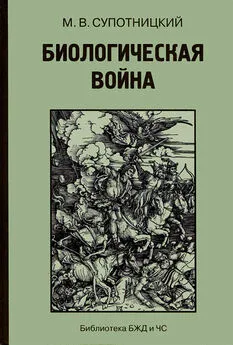
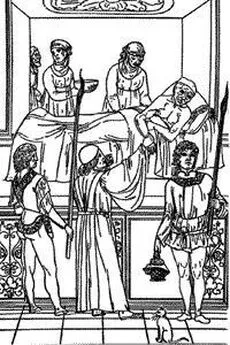

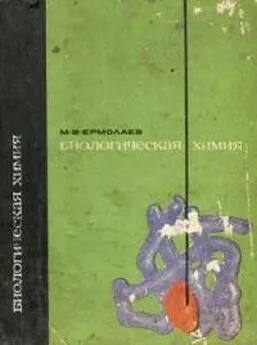

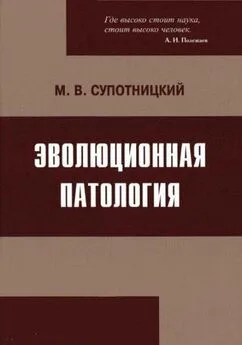
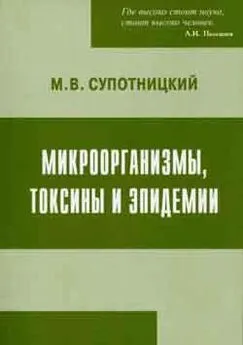
![Михаил Супотницкий - Очерки истории чумы. Книга II. Чума бактериологического периода [без иллюстраций]](/books/1084186/mihail-supotnickij-ocherki-istorii-chumy-kniga-ii.webp)
![Михаил Супотницкий - Очерки истории чумы. Книга I. Чума добактериологического периода [без иллюстраций]](/books/1084187/mihail-supotnickij-ocherki-istorii-chumy-kniga-i-ch.webp)
